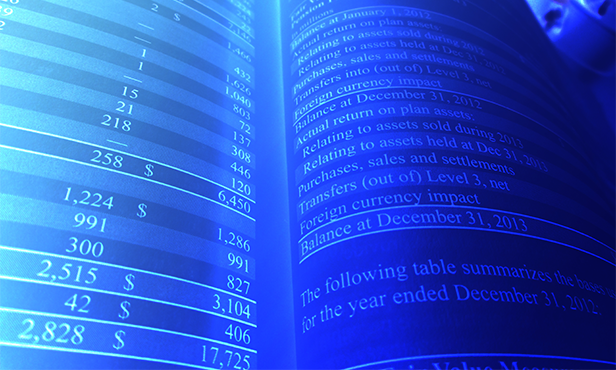
For year-end public company filers, the deadline to implementthe new lease-accounting standards (ASC 842 in the U.S. and IFRS 16internationally) is January 1, 2019—less than 60 days away. Mostcompanies have been focused on collecting all the necessary leasedata to achieve compliance, but that is only one piece of asuccessful transition. For those nearing implementation, here are11 key issues to consider in the last 60 days:
||
1. Accounting Policies, Elections, and TransitionStrategies
To adopt the lease-accounting standards, an organization willneed to update policies—for example, establishing policies for howto define asset classes and classification thresholds. It will alsoneed to elect practical expedients and define its transitionstrategy.
|There are several practical expedients companies can select toease the transition to the new standard, although they should firstevaluate the pros and cons of each. Some of these practicalexpedients—like the “packageof three”—must be applied to the entire lease portfolio, whileothers—like the option not to separate lease and non-leasecomponents—can be applied by asset class. Companies must considerhow each of these expedients will impact their lease portfolio andother financial metrics. In addition, companies that report underboth IFRS 16 and ASC 842 will need to consider the differencesbetween the practical expedients offered under the twostandards.
||
2. Business Process Readiness
Even once companies achieve compliance, they will need to ensurethey have the business processes in place to maintain complianceinto the future. At a minimum, the future-state processes shouldinclude methods to:
- Capture new leases. New leases willneed to be documented in the leasing system of record as they aresigned. Missing a large real estate lease or sale-leasebacktransaction could be material, which would raise issues aroundcompleteness with external auditors. This could lead to a lot ofprior-period adjustments and manual rework for the accountingteam.
- Document changes to leases. Leasescan undergo changes throughout the term, some of which may need tobe documented for accounting purposes. For example, certain causesof a payment change can result in a reassessment and remeasurementof the asset and liability value.
- Manage the end of term. The newaccounting standards require companies to use the “reasonablycertain end-of-term decision” when calculating the lease term.However, sometimes business circumstances will change, leading theorganization to adjust its plans to renew, terminate, or buy outthe lease. The standards actually require companies to reassess theend-of-term decision after certain triggering events, such as alarge investment in a real estate property, as those scenarioscould cause companies to change their initial decision.
|
3. Organizational Readiness
In the past, leasing has been a decentralized process withbusiness units and locations around the globe making their ownjudgments and decisions. However, in order to achieve compliancewith the new lease-accounting standards, many organizations haverealized they will need to manage leasing centrally.
|As a result, some organizations have started to set up leasingcenters of excellence (COEs). The center of excellence isresponsible for performing lease accounting and, in some cases,lease administration. The company first needs to determine the mixof functional groups that will be a part of the COE, then beginhiring additional personnel as needed. Alternatively, somecompanies may choose to outsource lease management to a thirdparty.
|Although it's certainly a step in the right direction, a leasingcenter of excellence cannot maintain compliance with the newstandard on its own. Compliance requires a cross-functional effortand the collaboration of stakeholders across the business. Forexample, the corporate real estate group will need to report anychanges to leased real estate assets. Functions like IT and fleetmanagement will need to do the same for equipment assets. Andregional accounting groups need to understand their roles inrelation to the work of the leasing center of excellence.
||
4. Data Readiness
For most companies, collecting data has been the mostchallenging part of implementing the new lease-accountingstandards. While many organizations are near the end of this phaseof the project, there are still important considerations for thelast 60 days. Companies should focus on identifying the lease datathat has not yet been abstracted and creating an action plan toexpedite the collection effort. They should consider reaching outto landlords or the leasing companies for copies of any missingleases. It may also be necessary to dedicate more resources to dataabstraction or to escalate issues to senior leadership if certainbusiness units or regions are not cooperating.
||
5. System Readiness
Many organizations have already selected lease-accountingsoftware and are busy implementing the system. Companies shouldwork closely with their lease accounting software vendor tounderstand the vendor's plan for completing critical functionalityand performing quality assurance testing. It's also a good idea tounderstand the timing of the vendor's SOC 1 and/or SOC 2 auditprocesses and how those processes align with internal and externalaudit cycles.
|Consider how journal entries will be uploaded to the generalledger and how to sync leased-asset data between thelease-accounting system and asset management systems like IT,fleet, and real estate. While many companies will not have time tointegrate their lease-accounting system with other financialsystems by the deadline, they will still need to develop temporaryprocesses to keep the data in sync.
|If an organization is not able to fully implement the softwareby the effective date, it will need to handle the gaps usingtemporary transitional processes. Companies should determine whichprocesses it will need to handle outside of the lease-accountingsystem in the short term, as well as what tools it will need tomanage those processes until they can be handled within thelease-accounting system.
||
6. Accounting Testing and Validation
An important part of the transition is testing the accuracy ofthe accounting coming out of both lease-accounting systems andmanual processes. Slightly different use cases can dramaticallychange the accounting output, so organizations should run throughas many test scenarios as possible before the transition. Consider,for example:
- Variable rents. Leases can befixed-rent, variable-rent, or both. Test a mix of scenarios atvarious payment frequencies and currencies. Also test for variableslike interim rent, initial direct costs, lease incentives, securitydeposits, and asset retirement obligations that impact therent.
- Modifications and reassessments.Changes that occur during the lifecycle of the lease can cause amodification or reassessment. Test a mix of scenarios in which thelease undergoes a modification, reassessment, or remeasurementduring the lease term.
- End of term. Lease contracts mayallow for a variety of different end-of-term options, each of whichcreates a different accounting output. For real estate, thoseoptions could be a renewal, expansion, termination, ormonth-to-month holdover. For equipment, they could include full orpartial renewals, buyouts, returns, and month-to-month evergreenpayments.
|
7. Training Programs
All the personnel involved in lease-accounting processes willneed to be trained on their responsibilities. If the companydevelops a center of excellence, that group will handle the leaseaccounting and potentially some lease administration duties, so COEstaff will need to know all the details of the new standard, aswell as how to use the lease-accounting software. Even so,corporate functions including procurement and treasury will beinvolved in capturing information on new leases, so staff in thosegroups will need to learn how to identify leases and embeddedleases. Real estate and equipment asset owners will be responsiblefor reporting any changes in leased-asset data, so those staff willneed to be trained on what asset changes could have an accountingimpact.
||
8. Audit Readiness
ASC 842 and IFRS 16 require right-of-use assets and leaseliabilities to be reported on the corporate balance sheet, whichwill necessarily lead to increased auditor scrutiny. Companies needto implement controls that will satisfy auditor concerns about:
- To prove existence, the company needs processes for confirming,at period end, that all existing contracts and individual leasedassets are accounted for, and that no terminated leases are stillbeing reported.
- To capture new leases, organizations should consider puttingcontrols around who in the company can enter new leases, and underwhat business scenarios.
- The company will need controls for managing and documentingactivity around leased real estate and equipment assets. Forexample, there should be processes for assigning responsibility ofassets to certain entities, geographies, departments, businessunits, and cost centers.
|
9. Board and Executive Communications
As the lease-accounting implementation deadline gets closer, theCEO, CFO, internal board, and audit committees will need to beaware of the status of the project. The project team should keepthese groups apprised of impacts to financial metrics and keyperformance indicators (KPIs), risks to on-time completion of theimplementation, and risks to compliance that external auditors haveidentified.
|Ratings agencies, institutional investors, debt holders, and anyother users of the corporate financial statements should also beinformed of any ways in which the new lease-accounting rules mightimpact the organization's KPIs and financial statements, so thatthey're not surprised on the effective date.
||
10. Presentation and Disclosures
Organizations need to understand the new standards' presentationand disclosure requirements. These include qualitative andquantitative disclosures, in addition to the right-of-use assetsand lease liabilities on the balance sheet.
|There are also disclosures required prior to the effective date,like the SEC's SAB 74 disclosures, which provide insight on theprogress of the implementation project as well as the anticipatedimpact to financial statements. Some organizations may also havefrozen-GAAP requirements to continue reporting in ASC 840/IAS 17 tosupport debt covenants, insurance contracts, or regulatoryrequirements. This will require maintaining ledgers for the oldstandards as well as the new ones.
||
11. Other Business Impacts
The effect of the standards will not be limited to the balancesheet. Loan covenants, access to credit, and even corporate leasingstrategy may be impacted. At many companies, the treasury team willneed to take the lead on resolving outstanding issues in theseareas.
|For large companies, the new accounting standards will addmillions of dollars' worth of assets and liabilities to the balancesheet. The influx of liabilities will cause many organizations torevisit their existing loan covenants. If it hasn't done soalready, the treasury group will need to analyze all current loancovenants and discuss any issues with the company's lenders.
|The increase in liabilities on the corporate balance sheet mayalso make it more difficult for the company to gain access tocredit in the future. At most companies, treasury will need tocommunicate with the organization's current creditors about howtheir decision process may change after the new standard. Manyratings agencies have already taken operating-lease liabilitiesinto account, so the added liabilities may not be a significantchange from their perspective. However, many companies arediscovering that their actual lease liabilities are higher thanthey previously thought, which means that ratings agencies may havealso been underestimating the business's total leaseliabilities.
|Keeping these impacts in mind, treasury will have to define thecompany's future leasing strategy. Lease-vs.-buy analyses will becrucial for all big-ticket asset requests. While the advantages ofleasing will stay the same, the new requirement to report leases onthe balance sheet could make leasing less attractive for treasuryorganizations.
|At the same time, though, pulling leases onto the balance sheetalso opens the door for treasury to use leasing as a hedging tool for interest rate andforeign exchange risk. The standard introduces both pros and cons,and ultimately the treasury function will be a key player indefining the organization's future leasing strategy.
||
Less Than 60 Days to Complete theImplementation
Most organizations still have a lot of work to do before theeffective date of the new standard, and they will likely have toprioritize some tasks over others. However, focusing on these 11issues will be crucial as the deadline closes in. A lack ofattention to these issues now could cause more serious problemsdown the line that will end up costing companies even more time andmoney.
|
 Michael Keeler isthe CEO, president, and founder of LeaseAccelerator. An expert inlease accounting and administration, he has been the primary forcebehind the growth and vision for LeaseAccelerator since 2003.Michael has more than 20 years of experience building softwarebusinesses. Prior to joining LeaseAccelerator, he was the presidentof Onmark Corporation and founder of both DataZen and EcologicCorporation.
Michael Keeler isthe CEO, president, and founder of LeaseAccelerator. An expert inlease accounting and administration, he has been the primary forcebehind the growth and vision for LeaseAccelerator since 2003.Michael has more than 20 years of experience building softwarebusinesses. Prior to joining LeaseAccelerator, he was the presidentof Onmark Corporation and founder of both DataZen and EcologicCorporation.
|
Complete your profile to continue reading and get FREE access to Treasury & Risk, part of your ALM digital membership.
Your access to unlimited Treasury & Risk content isn’t changing.
Once you are an ALM digital member, you’ll receive:
- Critical Treasury & Risk information including in-depth analysis of treasury and finance best practices, case studies with corporate innovators, informative newsletters, educational webcasts and videos, and resources from industry leaders.
- Exclusive discounts on ALM and Treasury & Risk events.
- Access to other award-winning ALM websites including PropertyCasualty360.com and Law.com.
*May exclude premium content
Already have an account? Sign In
© 2024 ALM Global, LLC, All Rights Reserved. Request academic re-use from www.copyright.com. All other uses, submit a request to [email protected]. For more information visit Asset & Logo Licensing.







